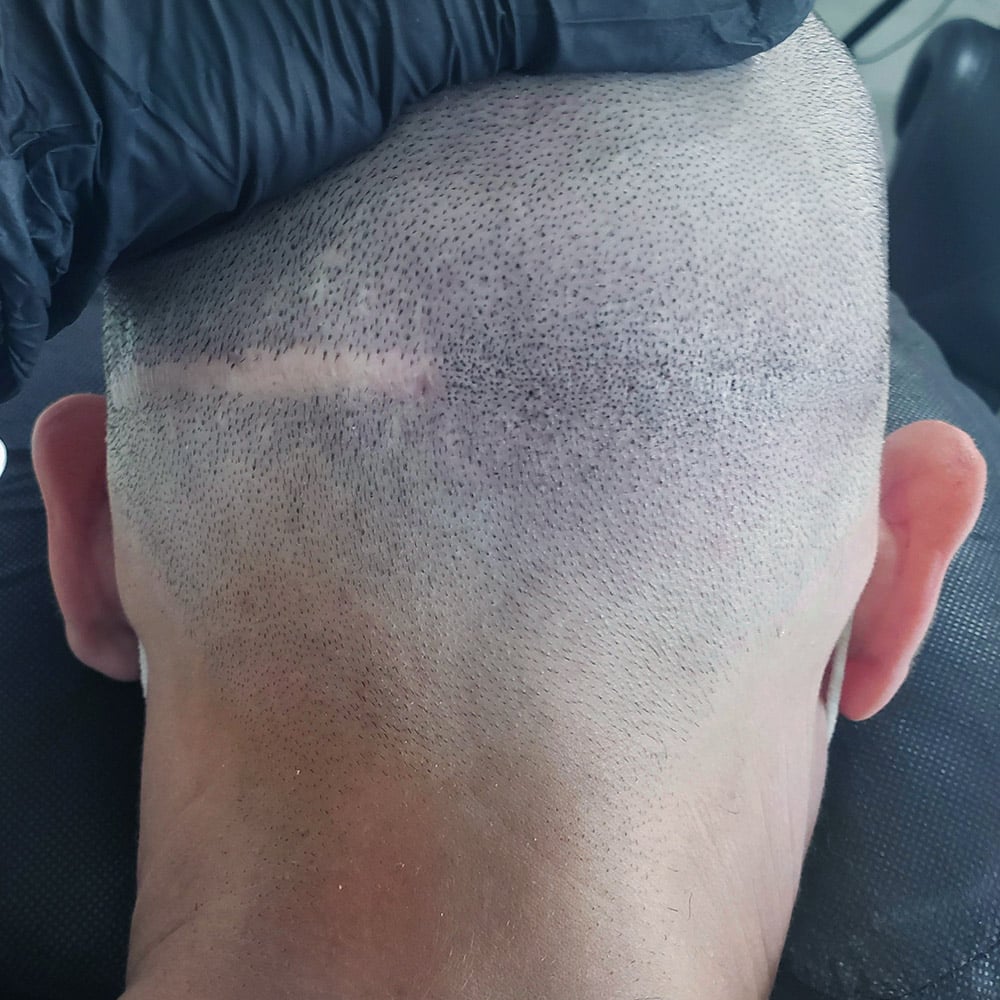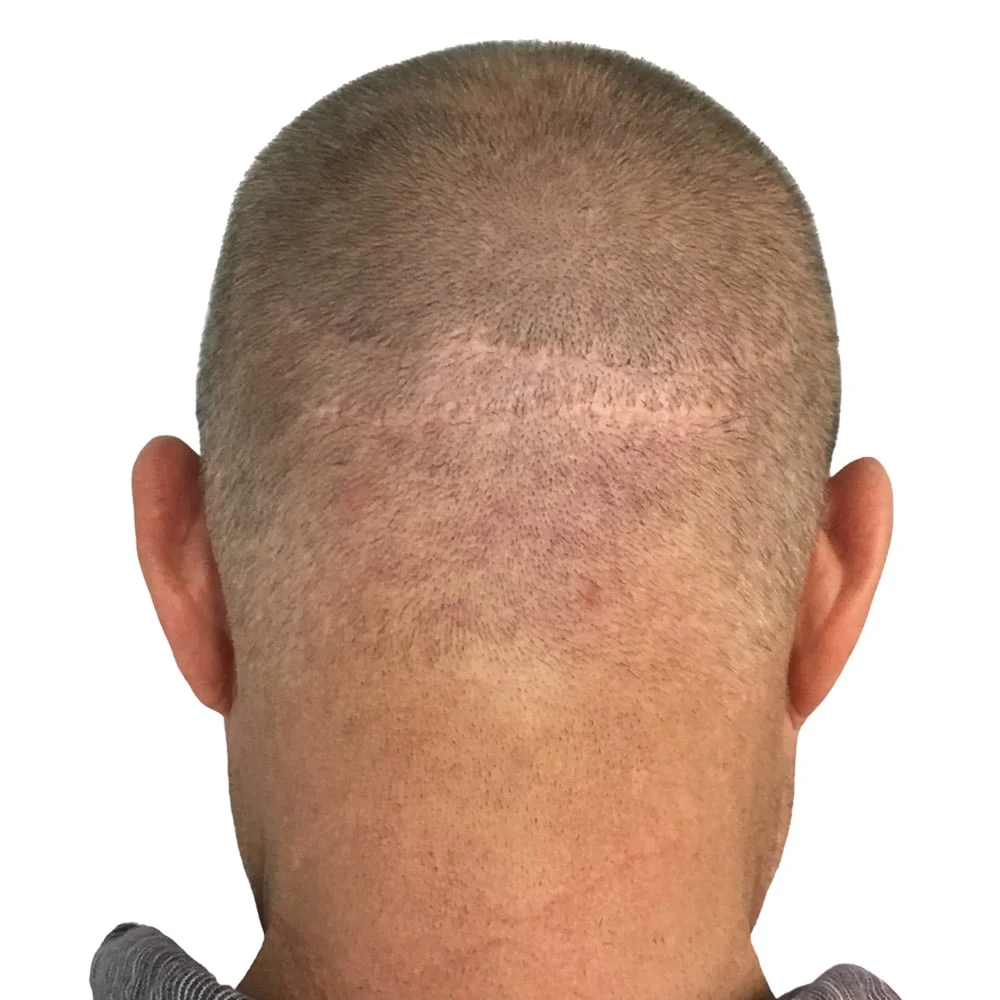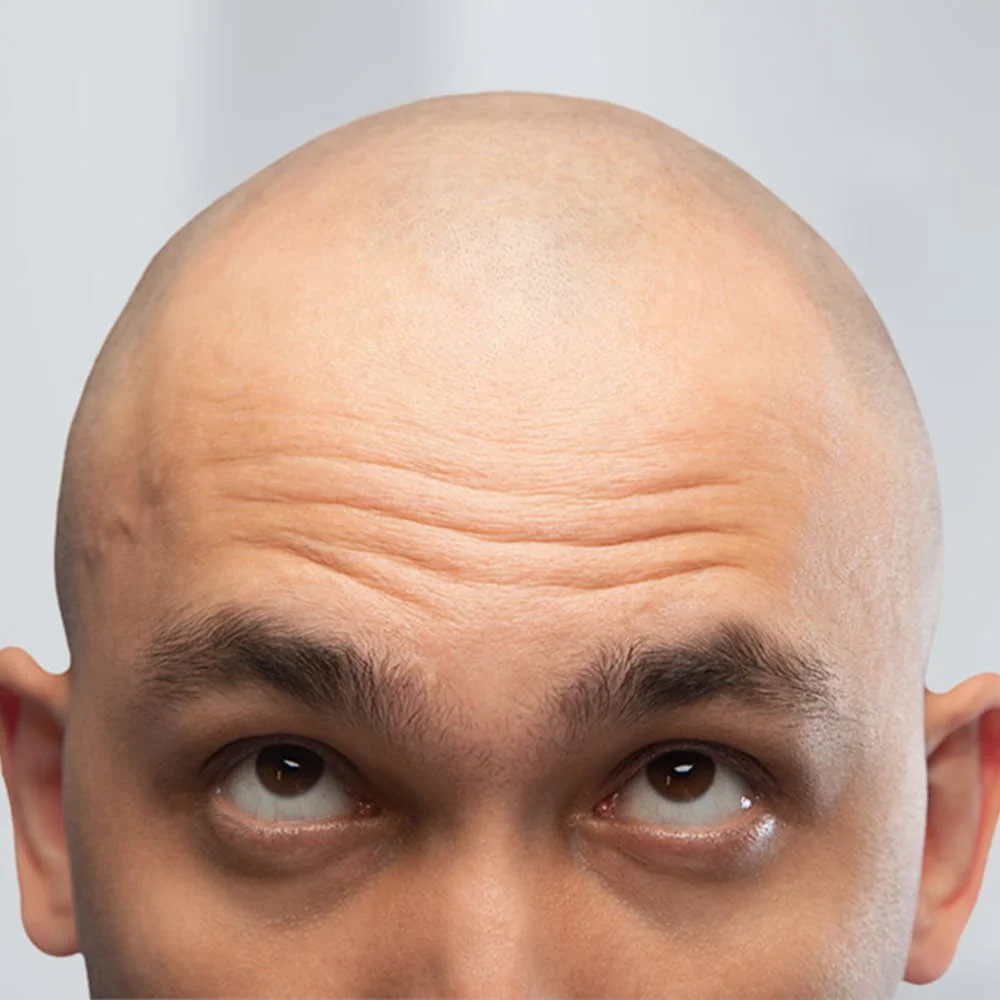Scalp Micropigmentation
For Scarring
How Can Scalp Micropigmentation Help?
Prior to the introduction of scalp micropigmentation scar repair, perhaps the most popular treatment for hair loss was hair transplantation. Let’s face it, at first, it really did sound like it was too good to be true.
Well, it was. Indeed, it has worked for many individuals; however, those for whom it has not have gone through an invasive procedure at significant cost. The skin is a complex organ and manipulating it for the purposes of re-introducing new hair will always have risks. Therefore, it stands to reason that hair transplant clients are left with heavy scarring from their experience since the treatment is surgical and scarring is our body’s way of protecting itself from further injury. However, it isn’t just hair transplant clients we see, we also see many athletes and people who have suffered head injuries for accidents. As the thickest skin on the body, the scalp skin is also where the densest amount of blood vessels are found, meaning that a scar, even from a relatively small injury, is quite common.


SMP Scar Treatments
Scars are dense and fibrous for a purpose. They develop in response to trauma to the skin to protect the area from further injury. Such tissue can be difficult to tattoo. At On Point SMP in Los Angeles we have extensive experience treating head scars. We can treat the area of injury where hair no longer grows so that the scar is rendered virtually invisible. We can do this on a full bald scalp, and we are able to do this on localized areas so that the scar itself is not seen beneath the natural hair. No matter where they are or how many there are, we can create a surface that looks completely smooth and undamaged.
Micropigmentation Benefits For Women
The numerous benefits of SMP for women in Los Angeles are what make it a popular choice for those undergoing hair loss. Some of these include the following:

Increased Hair Density
SMP can give the impression that your hair is denser and more voluminous than it actually is. This eliminates the need for temporary solutions like wigs or hats to hide bald patches or thinning hair.

Restore Receding Hairlines
Having a receding hairline can contribute to having a much older appearance. By restoring receding hairlines through SMP, you can look more youthful while evening out other problem areas on your scalp.

Scar Camouflage
When poorly done, hair transplants can lead to visible scarring from donor areas. SMP effectively hides these scars and other imperfections.

Boost In Self-Confidence
People experiencing hair loss or hair-related issues tend to develop feelings of insecurity. Much like one’s face, one’s hair is a visible aspect of one’s appearance. By undergoing an SMP treatment, an individual’s self-confidence can be boosted as they no longer have to hide bald spots or feel as though they will be judged because of their hair.
Does Scalp Micropigmentation Hurt?
A common concern about SMP treatments is if they hurt. Generally speaking, they don’t, as it is a non-surgical procedure. However, this would still depend on the client’s pain tolerance. Most procedures are completed with minimal pain or no pain. However, since needles are used, some level of discomfort may occur.
It’s also important to note that people who have psoriasis or other skin conditions should first consult their doctors before undergoing SMP. Flare-ups or breakouts can make it more difficult for the pigment to be applied and may even result in scarring. Those who are also prone to developing keloids might also want to avoid undergoing this treatment.
That being said, SMP treatments are certainly less painful than hair transplants. Scalp micropigmentation also requires little to no maintenance and has minimal recovery time. Depending on your goals and situation, you may need to undergo two to four treatments spaced between several weeks. After that, only touch-ups are needed for maintenance, which can be done every four to six years. Keep in mind that the skin undergoes natural exfoliation and touch-ups are needed when the pigment on your scalp begins to visibly fade.
What to Know Prior to an SMP Treatment
Before undergoing an SMP treatment, you need to be aware of a few things that can help make the procedure a success. These include the following:
SMP is not a one-time treatment. Rather, you need to undergo two to three, or sometimes even four, treatments depending on your situation. Treatments are scheduled several weeks apart to give the pigments time to settle on your scalp.
Typically, treatments can last about four to five hours. Make sure you reserve a whole day for your treatment as it may take longer than expected.
Bringing food and drinks to your appointment is not prohibited. Make sure to have easy-to-eat snacks on hand, and to keep yourself hydrated.
As mentioned, you may feel some discomfort during the SMP procedure. You can mitigate this by listening to music or watching TV. Reading books or watching a video from your phone might also help. The bottom line is to take your mind off the discomfort using an enjoyable distraction.

Who Is Suitable?
You may be a good candidate for an SMP treatment if you belong to one or more of the following categories:
- Men and women who want their hair to look more dense
- People with shaved heads who want to define hairless areas
- Those who suffer from alopecia, a condition wherein your immune system attacks hair follicles, thus leading to hair loss
- People who are ineligible for hair transplantation such as those with blood-related or blood-borne diseases, people under the age of 24, or those with serious health complications
- People with scarring on their head
